Tyrannosaurus rexis awesome. What’s not to love about a 40-foot-long, nine-ton predator with jaws that could crash down with over 12,800 pounds of force? And with “tyrant lizard king” as a title to boot, it’s no wonder that the Cretaceous carnivore has dominated our imaginations as the ultimate dinosaur.
But ol’ Tyrannosaurus was just the last and largest of a greater family of tyrants. In the 100 million year history of tyrannosaurs, there were crested hunters, giant fuzzballs, and dwarfed species that strode through Arctic snow. Bone by bone, these strange species are filling out the history of dinosaurian royalty.
1. Dryptosaurus
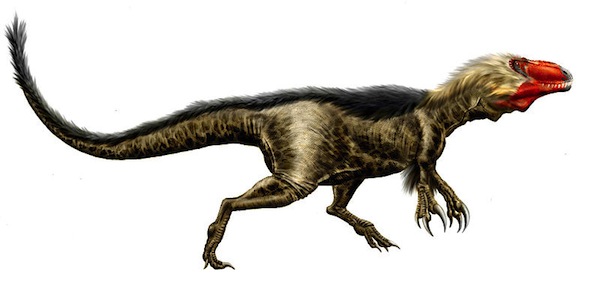
New Jersey seems an odd place for a tyrannosaur, but that’s where the first-described member of the famous family was found. In 1866, on the basis of a partial skeleton found in a Garden State marl pit, paleontologist Edward Drinker Cope described a predatory dinosaur he called Laelaps aquilunguis. A huge, wickedly-curved claw left no doubt in Cope’s mind that this dinosaur was the “devourer and destroyer” of all it could catch. Unfortunately for Cope, rival paleontologist Othniel Charles Marsh later pointed out that Laelaps was already the name of a mite and so took the liberty of renaming the dinosaur Dryptosaurus.
The identity of Dryptosaurus was unclear for decades. Isolated bone and fossil tidbits aside, no other skeleton has ever been found. But eventually paleontologists concluded that this 68 million year old, roughly 25 foot-long dinosaur was a sleek tyrannosaur that could have grappled prey with long arms tipped in oversized claws.
2. Proceratosaurus
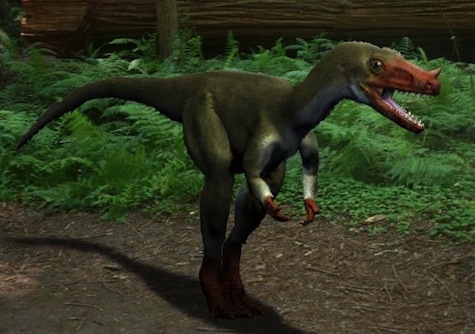
Dryptosaurus may have been named first, but it was actually among the last of the tyrannosaurs. The root of the tyrannosaurs goes back to animals such as Proceratosaurus. Discovered in 1910, this roughly 166 million year old dinosaur is principally known from a small, elongated skull with a little nasal horn on the end. The whole dinosaur was probably not much more than ten feet long.
Along with the dinosaur’s Jurassic age, the ornament led paleontologists to initially classify the theropod as a possible precursor to the impressively-adorned Ceratosaurus—hence the name—but, through more recent studies, paleontologists have concluded that Proceratosaurus was an early tyrannosaur. In the dinosaur’s heyday, 98 million years before T. rex, tyrannosaurs were slim pipsqueaks that stayed out of the paths of larger carnivores.
3. Dilong
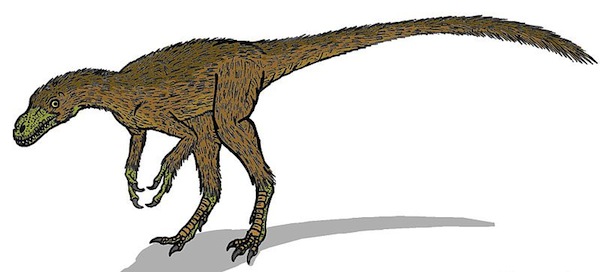
Named in 2004, the 125 million year old Dilong added a significant detail to how paleontologists envisioned early tyrannosaurs. At least one specimen was preserved with remnants of simple protofeathers. Paleontologists had suspected that tyrannosaurs were covered in more than just scales, and here was the evidence that some tyrants were indeed fluffy. So while a fuzzy, six foot long Dilong would look quite different next to the later, bigger, deep-jawed tyrannosaurs, this small dinosaur nevertheless raised the question of just how many of its family shared a coat of archaic plumage.
4. Guanlong
Guanlong had more style than most other early tyrannosaurs. Another one of the svelte, long-armed forms that looked more “raptor” and less T. rex, this 160 million year old dinosaur had a flattened, oval shaped crest jutting up from its skull. Even better, paleontologists have uncovered multiple Guanlong of different life stages since the dinosaur’s description in 2006, with younger individuals having less of a crest than the adults. That’s a clue that showing off was important to mature Guanlong, but the meaning of those dinosaur displays is lost to the Jurassic.
5. Eotyrannus
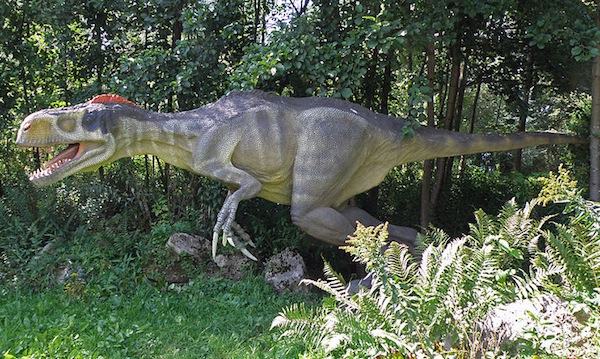
China has been a hotbed for early tyrannosaur fossils—Dilong and Guanlong included—but the UK has turned out a significant store of these dinosaurs. In addition to Proceratosaurus, England can claim the 132 million year old Eotyrannus as their own. While still on the puny side, this 13 foot long carnivore was large enough to snatch young Iguanodon and other small prey with its long, three-clawed arms.
6. Yutyrannus
Another surprise from China, Yutyrannus showed that size was not a barrier to fluffiness. While the discovery of Dilong showed that at least some small tyrannosaurs were covered in protofeathers, paleontologists debated whether the same would be true of larger species. If dinosaurs had hot-running metabolisms, some argued, insulating fluff could cause them to overheat. But the 2012 announcement of Yutyrannus refuted that argument. Together the three specimens of the 125 million year old dinosaur not only preserved protofeathers, but showed that Yutyrannus reached at least 30 feet long and was therefore one of the first truly giant tyrannosaurs. And if a 30 foot long tyrannosaur could sport a coat of fluff, why not Tyrannosaurus itself?
7. Appalachiosaurus
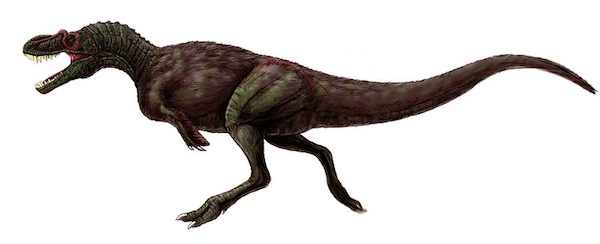
Most of the big, famous tyrannosaurs come from the Late Cretaceous of North America, when a shallow seaway divided the continent in two. But there were tyrannosaurs on the eastern side of the divide, too. Dryptosaurus was one of these eastern tyrants, and it was given some company in 2005 with the description of Appalachiosaurus from Alabama. Known from parts of the skull, limbs, and some vertebrae, Appalachiosaurus was a large, lean tyrannosaur with large arms and a shallow snout. That’s a different arrangement than the deep-skulled, tiny-arms forms that dominated the west at the same time, a hint of how eastern and western tyrannosaurs evolved in different ways after being separated by the sea.
8. Alioramus
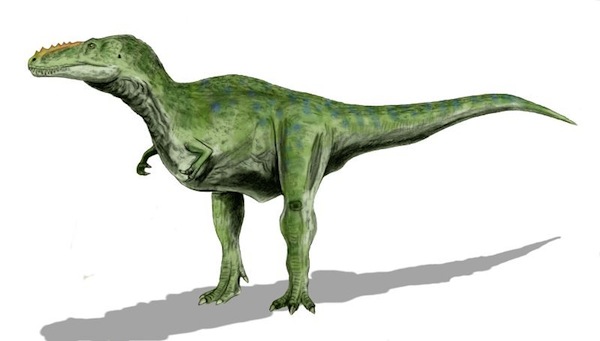
The early tyrannosaurus weren’t the only flashy ones. One of their later kin—the 70 million year old Alioramus—was a highly-decorated dinosaur. Like other Late Cretaceous tyrannosaurs, Alioramus had snout bumps and eye horns, but developed to a much more prominent degree than other species. This gave the dinosaur a slender, distinctive snout that would immediately set it apart from its bigger contemporary Tarbosaurus if you ever found yourself wandering through Cretaceous Mongolia.
9. Lythronax
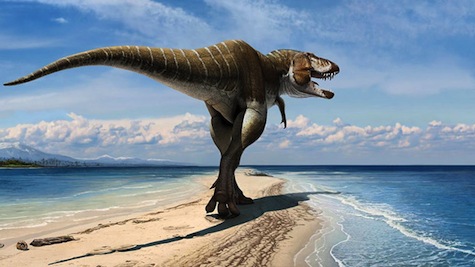
Announced late last year, this 80 million year old tyrannosaur has yet to become a household name. But Lythronax may yet become one thanks to its relationship to the most celebrated of tyrants. While not quite as enormous—the only specimen so far known would have been about 26 feet long—Lythronax had more than a passing resemblance to Tyrannosaurus. Among the characters the two tyrants shared was a skull that had become greatly expanded at the back, adding more room for jaw muscle attachments and swiveling the eyes forward to give the dinosaur binocular vision. Whether Lythronax was an ancestor of Tyrannosaurus may never be known, but the rapacious dinosaur evolved a very similar archetype.
10. Nanuqsaurus
The latest member to be welcomed to the tyrannosaur family, Nanuqsaurus was previously confused for some of its close relatives. Scrappy finds in the 70 million year old strata of Alaska’s North Slope showed that tyrannosaurs once plodded through the cool forests, and those bits and pieces seemed to resemble Albertosaurus and Gorgosaurus—two tyrannosaurs that lived at the same time but further to the south. Just last week, however, paleontologists Anthony Fiorillo and Ronald Tykoski proposed that the scattered skull pieces actually represent a new, pygmy species of tyrannosaur they named Nanuqsaurus hoglundi. The prehistoric Arctic was home to a tiny tyrant that stalked beneath the northern lights.
Brian Switek is the author of My Beloved Brontosaurus (newly out in paperback from Scientific American/Farrar, Straus and Giroux) and Written in Stone. He also writes the National Geographic blog Laelaps










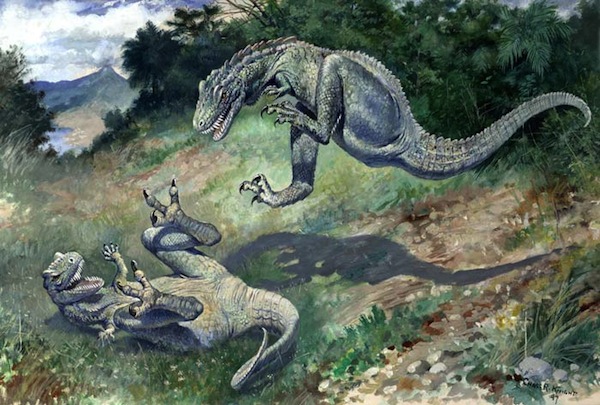
A Tyranny of Tyrannosaurs! Tyranny should totally be the “name” for a group of Tyrannosaurs.
I have a toddler…
So one thought I had was “When will I see these on Dinosaur Train?”
Hence why I come here for some adult conversations.
Cope was pwned by Marsh over the name “Laelaps” already belonging to a mite?? That sounds like a card from the game Bone Wars. No wonder HBO was planning to make a movie about these two (to star Steve Carell as Cope and the late James Gandolfini as Marsh).
@2: I understand completely. I have two children.
And is it just me, or is the name “Lythronax” unbearably cool?
Tyrannosaurus doesn’t mean “tyrant lizard king”, it means “terrible lizard”.